The dasheen plant’s use is very versatile in the hands of an experienced Trini cook. Actually, we use the whole plant, the leaves and the corm or mamamy, in dishes ranging from provision and saltfish to bhaji rice to callaloo. And added to that today we have saheena.
The Dasheen Plant
Dasheen (its scientific name is Colocasia esculenta) is a type of taro plant and it is commonly known as taro and grown as a root crop. Esculenta is Latin that means edible. The Dasheen plant has been cultivated for over 6000 years and it is a staple food in Asia, Africa and the Caribbean. Though most of the world called the plant taro, we call it simply dasheen. I also believe the Jamaicans and St. Lucian call it dasheen. The leaves are referred to as elephant ears.
In the Caribbean it is grown on damp land or flooded land. It is a tropical perrenial plant with huge heart-shaped leaves that grow on upright long sturdy petioles. These petioles grow from a rootstock or corm. Both the leaves and the petioles are eaten. However, no part of the dasheen should be eaten raw. (Read more here).The whole plant is a common ingredient in many Caribbean dishes. The corm is boiled, fried or mashed. The leaves are stewed, included in rice dishes, made into soups, or made as a or made a delicacy. For this post, it being used to make saheenas. (source)
Saheena: An Indian Delicacy
Saheena is a wonderful East Indian delicacy that is suitable for all occasions be it breakfast, dinner or even on this auspicious day of Divali. It’s filling and also vegetarian. Talk about versatility! I would like to call this the all rounder since it fits any occasion.
You would notice I titled this recipe Saheena I, that’s because there are two ways in which we Trinis make saheena. This method is the “roll up” method you will see what I mean as you read on. The other method …well, you would have to wait and see unless you know already 🙂
So here’s Saheena an allround East Indian delicacy made from dasheen bush an equally versatile plant. Enjoy!.
Saheena Recipe
Saheena
Ingredients:
12 dasheen leaves (taro)
1½ cup split peas powder
½ cup flour
1½ cup water
1 teaspoon saffron (tumeric) powder
1 tablespoon baking powder
½ teaspoon salt
1 tablespoon green seasoning
Paste for frying*
1½ cup split peas powder
½ cup flour
1 cup water
1 teaspoon saffron (tumeric) powder
1 tablespoon baking powder
½ teaspoon salt
1 tablespoon green seasoning
* this paste is a bit thicker
Direction:
Mix the ingredients together to form a paste. Wash and clean the leaves removing the stems.
Open one large dasheen leaf face down and rub paste on it. Place another leaf on top and repeat the earlier step.
Continue layering and pasting each layer until the paste is finished or the leaves are used up.
Roll tightly together and tuck the ends.
Place in a clean plastic bag and put into boiling water to steam. -or- tie the roll with string and place it in a steamer.
Note: We used a clear plastic bag so a zip lock bag could be used too. Use only clear plastic bags!
Make sure the knot is above the water.
Remove after 15 minutes and leave to cool.
Cut in 1/2 ” slices.
Paste some of the thicker mixture on both sides.
Fry until golden…
Note: To eat the saheena simply cut open the and place the kuchela or chutney in the middle like a sandwich.
This is really getting to be a marathon. More to come!. Ah gone again!
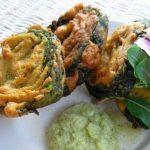
Saheena I
Ingredients
- PASTE FOR FRYING:
- 1 1/2 cup split peas powder
- 1/2 cup flour
- 1 cup water
- 1 tsp. saffron tumeric powder
- 1 tbsp. baking powder
- 1/2 tsp salt
- 1 tbsp green seasoning
- Note: This paste is a bit thicker)
- 12 dasheen leaves taro
- 1 1/2 cup split peas powder
- 1/2 cup flour
- 1 1/2 cup water
- 1 tsp. saffron tumeric powder
- 1 tbsp. baking powder
- 1/2 tsp salt
- 1 tbsp green seasoning
Instructions
- Wash and clean the leaves removing the stems. Open one large dasheen leaf face down and rub paste on it. Place another leaf on top and repeat the earlier step. Continue layering and pasting each layer until the paste is finished or the leaves are used up.
- Roll tightly together and tuck the ends. Place in a clean plastic bag and put into boiling water to steam. -or- tie the roll with string and place it in a steamer.
- Note: A clear plastic bag, or a zip lock bag could be used. Use only clear plastic bags!
- Make sure the knot is above the water. Remove after 15 minutes and leave to cool. Cut in 1/2 ” slices. Paste some of the thicker mixture on both sides. Fry until golden and drain.
- Serve with your favourite kuchela or chutney.
By the way, The Simply Trini Cooking Cookbook is now available at Amazon in Kindle and soft cover paperback copy. The cookbook contains over 600 recipes. Order your copy today!

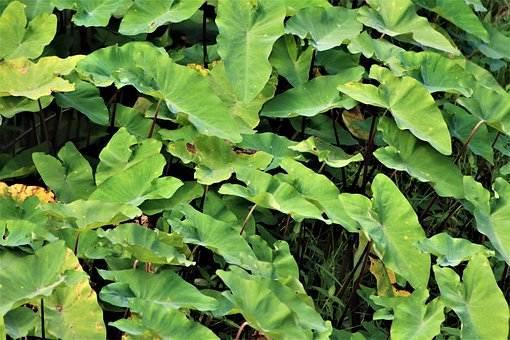
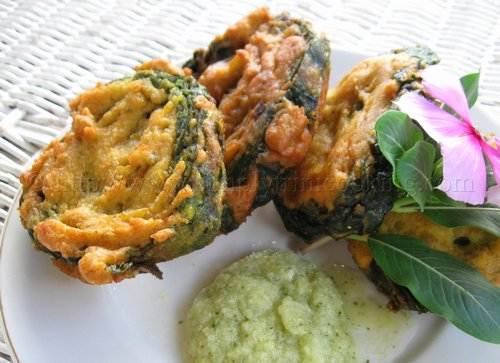
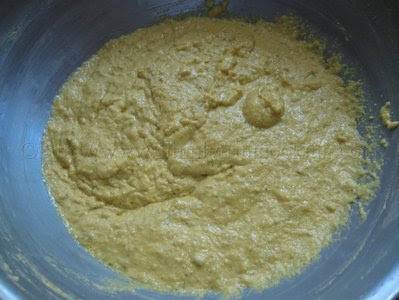
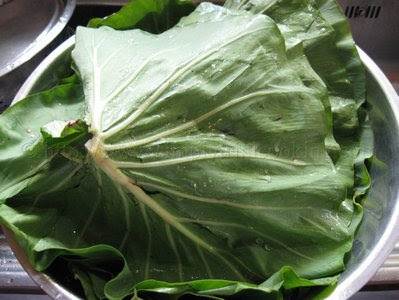


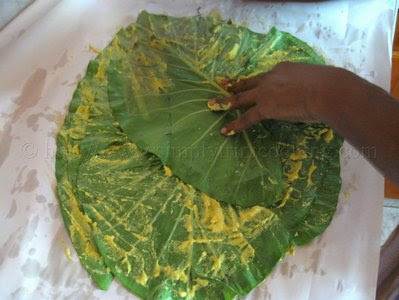
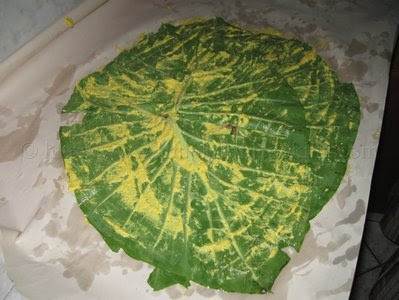

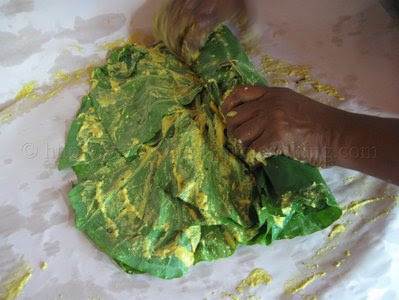


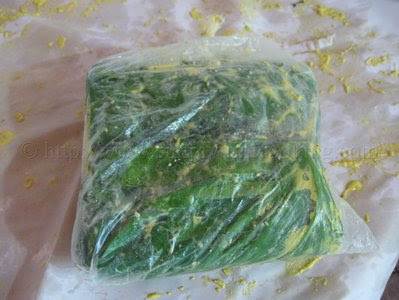
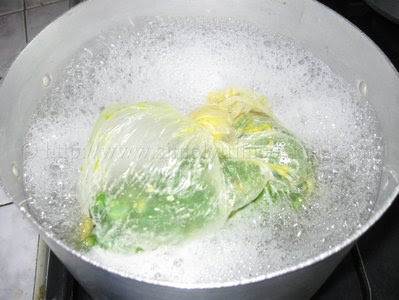


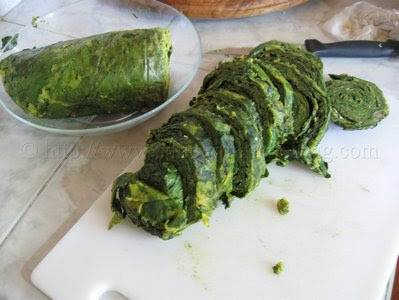



No problem 🙂 thanks for stopping by.
What an interesting post? We do not have anything like this here in Montecito California? We really enjoy seeing your artful dishes. Best, S
wonderful…we call it patra..the name saheena is new for me..
yes we have a tradition to eat yam for diwali and i made yam kababs which i am going to post very soon..
Thanks Sangeeta for stopping by Happy Divali 🙂
see this..http://banaraskakhana.blogspot.com/2009/10/diwali-wishes-with-malpua-and-yam-shami.html
I think I like this kind the best because it wasn’t as readily available (until Mom started freezing the rolls – then defrosting and steaming happen at the same time).
No probs Kimberly 🙂
OMG!!! thank you for this recipe!! I remember my aunt making this type of saheena and it was marvelous!! Gonna try it for my husband!!
Thanks a lot!! :))
Hi,
I am just finished trying this recipe, it is wonderful! Came out really well, Thank you.
You’re welcome Princess 🙂
my husband and i love saheena and we are always looking to buy good ones, so when i saw this recipe i decided to try it, because i always knew the proccedure but was not certain about the measurement of the ingredients, it came out very good as to texture and the taste, but however i did think that in future i will alternate 2 things….i think it could have used a tip more salt and a whole lot less of tumeric, 1tsp is way too much for 2cups of splitpeas powder and flour combined it made the batter taste very bitter because tumeric is a very strong taste when overused, besides that i will continue using this recipe with my alterations, thanks.
I luv this kind of saheena. Thanks felix
I love this type of saheena. Every Sunday morning my husband buys it for me in the market. Glad for the recipe so I can finally try it on my own. Will let you know how it comes out
You’re welcome Empress 🙂
Can you bake this or have you tried to do a baked version
This is traditionally fried. If you would like to try baking it by all means. Thanks for commenting.
Delicious recipes. I love this kind of saheena, it’s my favorite, and I do make it every week. Keep posting. Great work ?
Now I have an idea what to cook for Valentine’s Day!